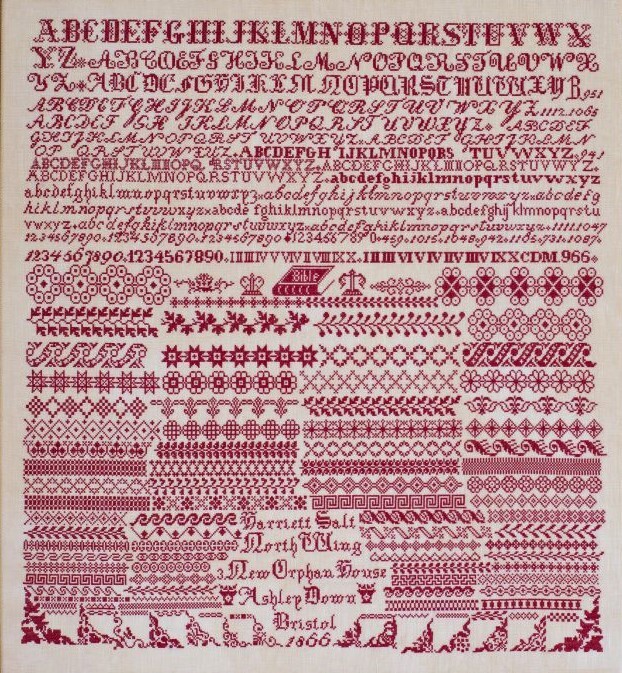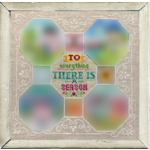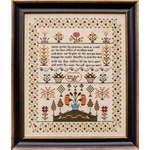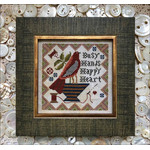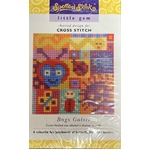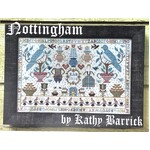Harriett Salt 1866
Chart Only
Sold Out
Samplers worked within the Müller Orphanage are highly sought after by collectors and it is said that a collection of antique samplers or a stitcher’s sampler wall is not complete without at least one example. The samplers acted as a reference to the girls’ needlework skills in the marking of linen and household items when many of the girls found employment as domestic servants.
Bristol orphanage samplers are particularly important as the orphanage kept meticulous records of each child, casting light onto the poverty and desperate social conditions that existed throughout Britain in the 19th century. Today these records give us the opportunity to share Harriett’s story with you. Please see the separate section for copies of the orphanage’s records.
The sampler is suitable for all levels of ability and can be stitched on linen or aida.
Harriett Stitched Another Sampler ~ Claudia Dutcher Kistler
Every girl who lived at George Müller’s orphanage between the ages of 12 to 15 was required to stitch a red thread sampler. These intricate samplers were their resume with a needle. There were hundreds of these samplers stitched. Not all have survived, but we have enough of those that did survive to know the alphabets, motifs, and other characteristics that define a red Bristol sampler. Harriett’s sampler, presented in this leaflet, was the sampler she had to stitch. Unique also to the Bristol Orphan Homes, and much less familiar, are the multi-coloured samplers stitched there. These samplers are far fewer the 1866 “red” Harriett sampler, it was discovered that a multicoloured sampler was sold at auction in 2015 that was stitched by a Harriett Salt.
There was only one Harriett Salt listed in the orphan records from 1866 -1868. From the auction pictures, the name and information on this sampler reads: Harriett Salt, North Wing, New Orphan House, Ashley Down, Bristol, 1868. If this is Harriett’s second sampler, then we now know a little more about the purpose of the rare multi-coloured orphan samplers, and why there are so few of them seen today. Harriett Salt’s skill with a needle has opened the door to the idea that the multi-coloured Bristol samplers could be second samplers. Most of the Bristol multi-coloured samplers are not signed or dated, which makes sense if the girls were working them for their own pleasure. These samplers also share similar elements just as the redwork pieces do. Here are several reasons why only certain girls would have been have been offered the chance to stitch a second sampler.
First – the multi-coloured samplers were worked in expensive silk thread. A beginner would not have been allowed to stitch with silk.
Second – the girl would have to have been at the orphanage long enough to complete her redwork sampler first and then begin another sampler.
Third – she would have purposed to set aside dedicated stitching time apart from her daily duties at the orphanage, which included taking care of the younger children, laundry, and housekeeping. Therefore, the girl would have enjoyed working with needle and thread and wanted to stitch a second sampler.
Harriett’s 1868 sampler is the earliest dated and signed multi-coloured Bristol sampler that has surfaced so far. Harriett Salt, because of the sampler(s) she stitched, has provided us with an unexpected insight into sampler history.
Claudia Dutcher Kistler is a collector and lecturer on Bristol orphan samplers. If you would like to learn more about Bristol samplers, please visit her website: Bristolsamplers.com
Be The First To Review This Product!
Help other Crafty Frog users shop smarter by writing reviews for products you have purchased.

